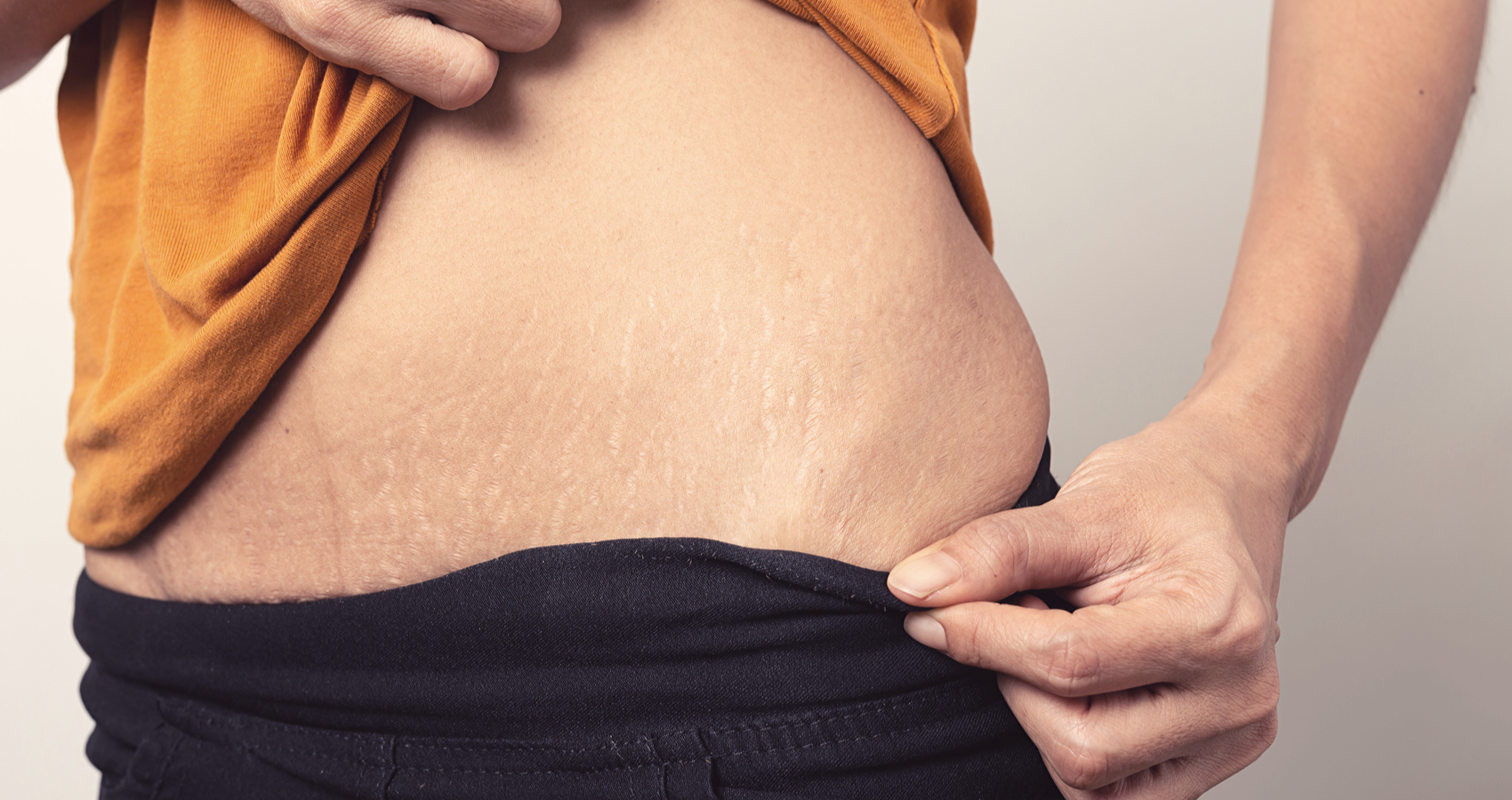Everyone's pregnancy is different, but if there's one side effect that most of us can relate to, it's stretch marks. Some of us have had them for years, long before we ever got pregnant! Others found themselves watching those lines grow across their bellies and boobs (and thighs and butts) and their pregnancy progressed. Maybe you didn't even realize you had them until your baby was born and your tummy deflated back to its pre-baby size. Stretch marks are just one of those things that lots of women (and plenty of men) experience. But what exactly is a stretch mark? And is there any way to actually get rid of them?
What are stretch marks?
Stretch marks can happen when your skin stretches and can be caused by an increase in your system of the hormone cortisone. They're most common during pregnancy, after rapid weight gain or loss, and can even appear on teens following a rapid growth spurt. Taking corticosteroid pills or using corticosteroid lotions or creams can also cause stretch marks, as they decrease your skin's ability to stretch. Some adrenal gland disorders can also cause stretch marks, by increasing the amount of cortisol in your system.
During pregnancy, stretch marks typically develop along your stomach, breasts, and thighs, although they can appear anywhere. They'll be a different color and texture than your regular skin; they can range in color from purple to white, and will typically feel like a ridge or indentation in your skin. In some cases, stretch marks may actually feel sore or itchy.
How can you get rid of stretch marks?
First, the good news: stretch marks will fade over time. But the bad news is, there's no treatment currently available to make them disappear completely. There are things you can try to improve the appearance of stretch marks, but none that have been proven at effectively diminishing their appearance completely.
Tretinoin creams like Retin-A and Renova can help restore the collagen in your skin, giving your skin more elasticity. These creams work best on fresh stretch marks that are still red or purple, but the creams do come with some side effects. They can be highly irritating to skin, and shouldn't be used if you're pregnant or nursing. There are also several laser therapies, like pulsed dye laser therapy, that can also encourage the growth of collagen and elastin in your skin (these therapies work best on fresh stretch marks).
Excimer laser therapy stimulates melanin production, which can help your stretch marks more closely match your natural skin color. And microdermabrasion (polishing the skin with tiny crystals to reveal new skin underneath) can help improve the appearance of older stretch marks.
Can stretch marks be prevented?
You've undoubtedly heard about lotions or creams that claim to prevent stretch marks during pregnancy. Unfortunately, none of them have been proven to work, and there's no proven way to prevent stretch marks. Some people seem to have a genetic predisposition to them, while others are genetically predisposed to not get them.
However, keeping your skin moisturized can help minimize the itching and dry skin many women experience during pregnancy. And embracing them is possible and better for you to let go of what you can't control. They're pretty cool if you choose to look at them that way.
READ NEXT: Pregnant Ashley Graham Praised For Sharing Stretch Marks Photo

